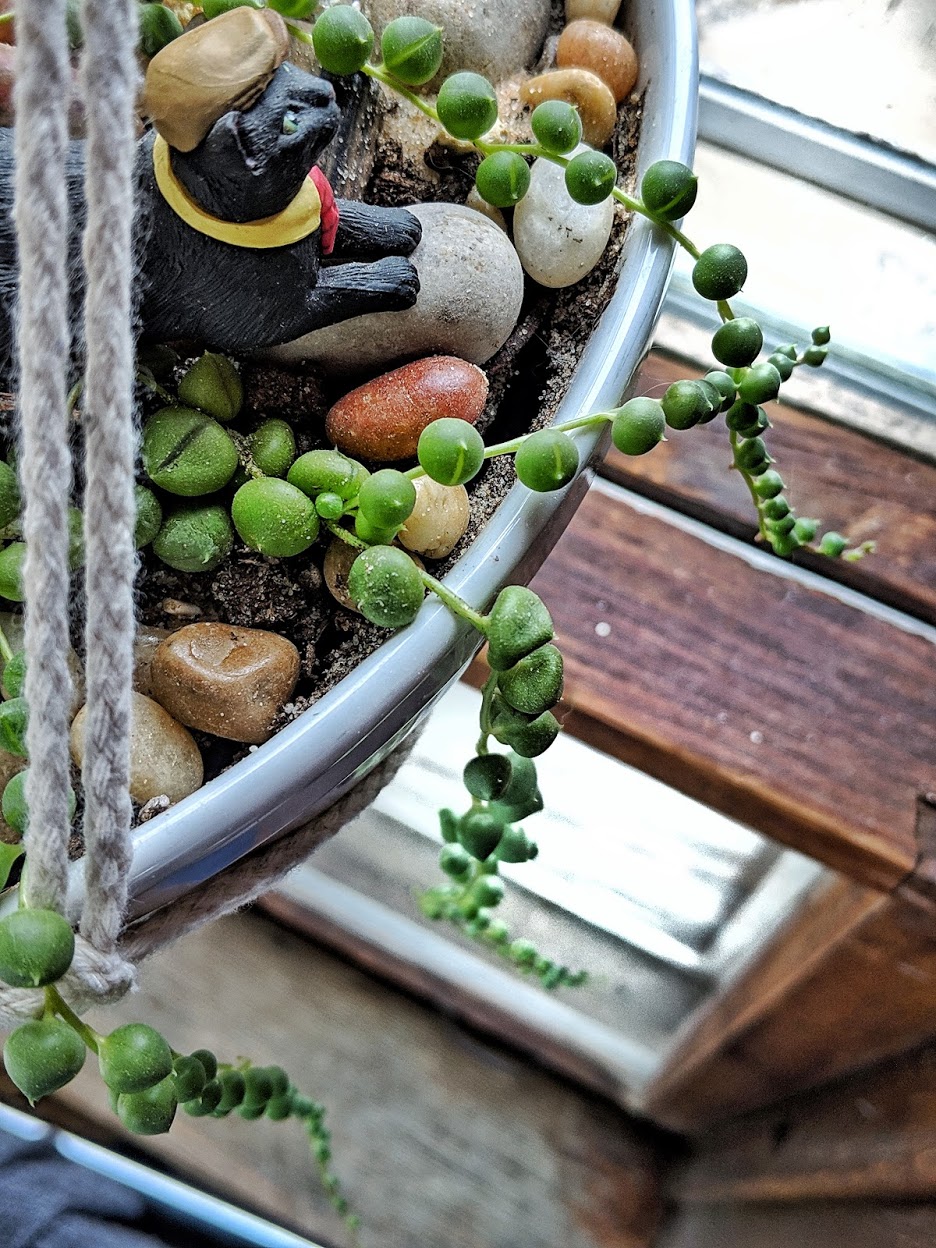String of Pearls
Scientific Name: Senecio rowleyanus
⚠Toxicity⚠
The String of Pearls plant is considered 💀TOXIC💀 to both cats and dogs AND humans but like, just don’t eat your house plants you goof!
Symptoms of String of Pearls ingestion include: Vomiting, hypersalivation (drooling), diarrhea, depression, lack of grooming, increased aggression, lethargy and weakness, excessive sleeping and/or hiding.
In humans, ingestion can cause vomiting and diarrhea, and skin contact with the sap may cause irritation or rash
It’s important to remember that any plant may cause vomiting and gastrointestinal upset in cats and dogs, and those with large leaves can be a choking hazard. If you believe that your pet is ill or may have ingested a poisonous substance contact either your local veterinarian or the APCC 24-hour emergency poison hotline at 1-888-426-4435
General Info
Unique and unusual-looking, String of Pearls plants are easy to care for and propagate. They do look a lot like a beaded necklace, but probably don’t actually wear them like one 📿
❓ Let me know in the comments if you have any questions regarding the String of Pearls or suggestions for plants you would like me to talk about in the future
Care Instructions
🔪How to Murder
It’s actually pretty hard to murder the String of Pearls plant, but like I said earlier, you could just yank that thing out of the soil and wear it like a necklace 📿🔜👻
Drowning is always an option 🌊🌿
🌍Soil
String of Pearls plants prefer a sandy, well-draining soil, like most succulents. If you use regular potting soil, mix in some sand, perlite, or vermiculite to improve drainage
💦Water
String of Pearls plants are pretty thirsty for a desert plant and will require water about once every 7 to 10 days when growing, roughly every 3 to 4 weeks in the winter. Just make sure the soil is allowed to completely dry out in-between watering to avoid root rot.
Use room-temperature, filtered or “aged” water (water left in an open container for several days to remove chlorine) if possible. Empty the catch saucer under the plant after every watering
💩Fertilizer
In spring and summer, feed a balanced succulent or all-purpose liquid fertilizer at half-strength every 2 weeks, do not fertilize in fall or winter when the plant is dormant
🌞Environment
Place the plant in a bright area with access to direct sunlight for a few hours a day, if possible. Lower sunlight is fine, but will result in less growth
Keep room temperature between 65-75°F (18-24°C) and avoid drafts
As desert plants, String of Pearls plants prefer low humidity and should be fine with typical household levels
🌷Flowers
Though the String of Pearls plant is not typically grown for it’s blooms, it can produce small, white flowers with brightly-colored stamens that have a faint scent of cinnamon and cloves. You can raise the chances of spring blooming by cutting down on watering in the winter and placing the plant in a slightly cooler area
👩🌾Re-potting
String of Pearls are completely fine with being crammed into a small pot together with other succulents, but you should still re-pot when the container is no longer allowing the plant to expand or after a max of 3 years to refresh the soil
Use a container that is 1 inch larger than the current one and has holes for drainage in the bottom
Pour an inch of well-draining, sandy potting mix into the new container
Gently hold the plant as close to the soil line as possible, turn the pot sideways, and slowly pull the plant out. Remove excess soil from around the roots
Put the plant in the new container and fill up the area around the plant, taking care not to change how high the soil line is on the plant and gently spreading the roots out
✂Pruning
Though pruning is not required, to keep your String of Pearls a manageable length or to shape its dangling stems, you can simply use a sharp pair of scissors or pruning shears to snip the stem wherever you please. Any cuttings you take can be replanted! We’ll talk about that further in the next section
🌱Propagation
Water the day before propagation to ensure proper hydration
Remove at least one inch of stem from the parent plant using sharp scissors or pruning shears
If necessary, take off the bottom few sets of leaves to expose some stem. Dip the end of the baby’s stem in rooting hormone and plant it in your potting mix deep enough that it feels secure
Keep the babies warm and their soil slightly moist and they should establish roots within a few months
Keep the soil moist but not soaking wet by misting the top of the soil every few days
After a month, begin letting the top of the soil dry out before watering
After about 6 months, if it is spring or summer, begin feeding the plant a balanced succulent or all-purpose liquid fertilizer at half-strength every 2 weeks


